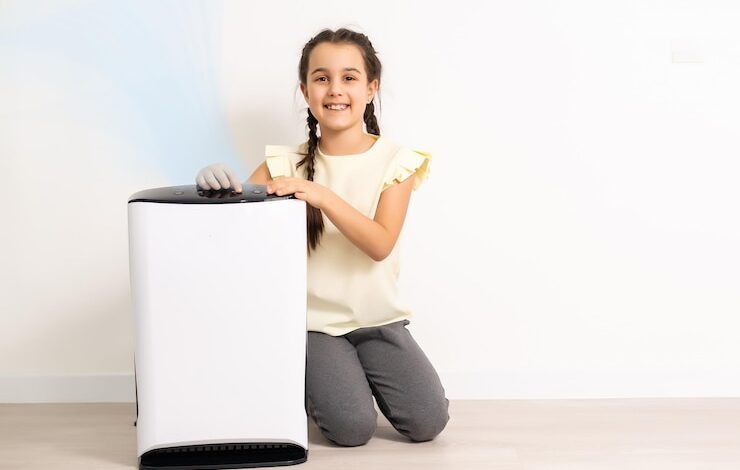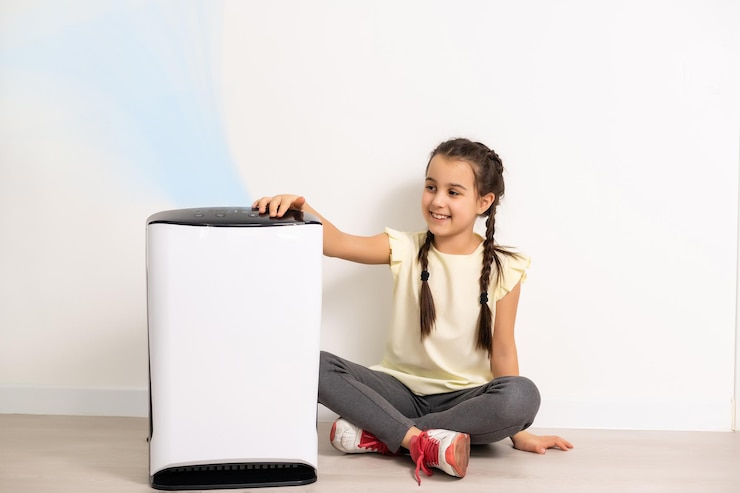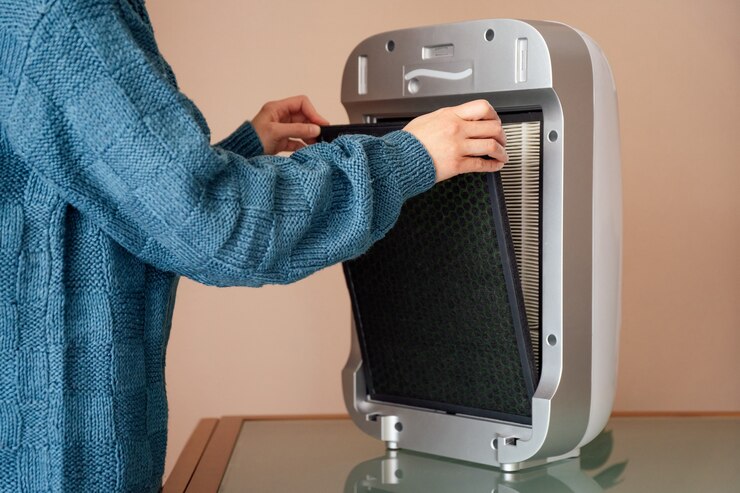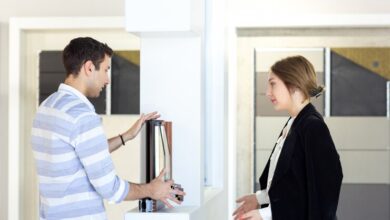What’s the Best HEPA 13 Filter for Your Home?

Air quality is an essential factor for maintaining a healthy living space, especially for individuals who suffer from allergies, asthma, or other respiratory conditions. As more people become aware of airborne pollutants and their negative effects, investing in a high-efficiency particulate air (HEPA) filter has become a priority for many households. HEPA 13 filters are among the most efficient filtration systems available, capable of capturing 99.97% of particles as small as 0.3 microns. This includes dust, pollen, pet dander, smoke, and even some bacteria and viruses. However, with so many brands and models on the market, choosing the best HEPA 13 filter for your home can be overwhelming. This guide will help you understand what to look for in a HEPA 13 filter, compare top-rated models, and provide useful tips to ensure you get the most out of your investment.
What Makes HEPA 13 Filters Different?
HEPA filters come in various grades, with HEPA 13 being one of the highest. The main distinction between a HEPA 13 filter and lower-grade HEPA filters lies in its filtration efficiency. While standard HEPA filters can trap small particles, HEPA 13 filters are specifically designed to meet stricter European and U.S. medical standards. This means they are used not just in homes but also in hospitals, laboratories, and clean rooms where air purity is critical. The structure of a HEPA 13 filter consists of dense fiber layers that effectively capture even the tiniest contaminants. This level of filtration is particularly beneficial for households with elderly individuals, children, or anyone with a compromised immune system.
Another factor that sets HEPA 13 filters apart is their ability to remove airborne pathogens. While they do not neutralize bacteria or viruses, they can trap them, reducing the overall presence of harmful microbes in your indoor air. Unlike traditional air purifiers that rely on activated carbon or ionic technology, HEPA 13 filters focus purely on mechanical filtration, making them a safer and more effective option for long-term air quality improvement.
Key Features to Look for in a HEPA 13 Filter

When selecting a HEPA 13 filter for your home, it’s important to consider several key factors that will influence its performance and usability. The first aspect to examine is the filter size and compatibility. Not all air purifiers support HEPA 13 filters, so it’s essential to check whether your current unit can accommodate this level of filtration. Some manufacturers design their HEPA filters to fit only specific models, which can limit your options.
Another critical feature is the air change per hour (ACH) rating. This metric indicates how often the filter can completely clean the air in a given space. For optimal air quality, look for a HEPA 13 filter with an ACH rating of at least four to five air changes per hour. This ensures that allergens and pollutants are continuously removed from your indoor environment.
Additionally, noise levels and energy consumption are important considerations. Some HEPA 13 filters operate quietly, making them ideal for bedrooms and study areas, while others may produce noticeable white noise. Energy-efficient models can help lower electricity bills while maintaining consistent performance. Lastly, check for certifications such as AHAM, CADR, and Energy Star ratings, as these indicate that the filter has been independently tested for efficiency and safety.
Top HEPA 13 Filters for Home Use
1. Dyson Pure Cool TP04
The Dyson Pure Cool TP04 is a premium air purifier equipped with a HEPA 13 filter and an advanced activated carbon filter for odor removal. It features an intelligent air quality sensor that automatically adjusts fan speed based on pollutant levels. The TP04 is also Wi-Fi enabled, allowing users to monitor air quality and control settings via a mobile app. While it is on the pricier side, its sleek design and dual functionality as both an air purifier and fan make it a worthwhile investment for modern homes.
2. Honeywell HPA300
For those seeking a budget-friendly yet powerful HEPA 13 filter, the Honeywell HPA300 is a great choice. It covers large rooms up to 465 square feet and has an impressive ACH rating of five, meaning it can cycle clean air frequently. Its simple, easy-to-use controls make it a favorite among homeowners looking for an effective but low-maintenance air purification solution. However, it lacks smart features like Wi-Fi connectivity, which some users may find inconvenient.
3. Levoit Core 400S
Levoit has become a trusted brand in air purification, and the Core 400S is one of the best HEPA 13 filter-equipped models available. This air purifier is designed for medium to large rooms and features a three-stage filtration system that includes a pre-filter, a HEPA 13 filter, and an activated carbon filter. Its smart technology allows for remote control via the VeSync app, and it integrates with Alexa and Google Assistant for voice commands.
4. Medify MA-40
If you need a medical-grade HEPA 13 filter, the Medify MA-40 is an excellent choice. It can cover up to 1,600 square feet and is highly efficient at removing allergens, dust, and smoke. One of its standout features is the child lock function, making it a great option for families with young children. The downside is that filter replacements can be slightly expensive, but the overall performance makes up for it.
How to Maintain Your HEPA 13 Filter for Maximum Efficiency

Regular maintenance is crucial for ensuring that your HEPA 13 filter continues to perform effectively. The most important step is replacing the filter at the recommended intervals, usually every 6 to 12 months, depending on usage and environmental conditions. A clogged filter can reduce airflow and diminish its ability to trap pollutants. Some air purifiers have filter replacement indicators, making it easier to know when a change is needed.
It’s also essential to vacuum or wipe down the exterior of the air purifier regularly to prevent dust buildup. For models that include a washable pre-filter, cleaning it every two to three weeks can prolong the lifespan of the HEPA 13 filter itself. Placing the purifier in an open area with good airflow can further enhance its efficiency.
FAQ
1. Can a HEPA 13 filter remove viruses?
HEPA 13 filters are highly effective at trapping viruses, but they do not kill them. They can significantly reduce the presence of airborne pathogens, but additional measures like UV-C light or air sanitizers may be needed for complete virus elimination.
2. How often should I replace my HEPA 13 filter?
Most manufacturers recommend replacing HEPA 13 filters every 6 to 12 months, but this depends on air quality and frequency of use. If the filter becomes discolored or airflow decreases, it’s time for a replacement.
3. Are HEPA 13 filters safe for people with allergies?
Yes, HEPA 13 filters are highly beneficial for allergy sufferers as they capture common allergens like pollen, pet dander, and dust mites. Using one in combination with regular cleaning can significantly improve indoor air quality.
4. Can I wash a HEPA 13 filter?
No, HEPA 13 filters are not washable. Washing them can damage the fibers and reduce their effectiveness. Some models have pre-filters that are washable, but the main HEPA filter must be replaced when necessary.
Conclusion
Choosing the best HEPA 13 filter for your home depends on factors such as room size, noise levels, and additional features like smart connectivity. Models like the Dyson Pure Cool TP04, Honeywell HPA300, Levoit Core 400S, and Medify MA-40 offer excellent filtration and unique benefits suited for different needs. Regardless of which filter you choose, regular maintenance is key to ensuring long-term effectiveness. Investing in a HEPA 13 filter is a step toward cleaner air, better health, and a more comfortable living environment.


